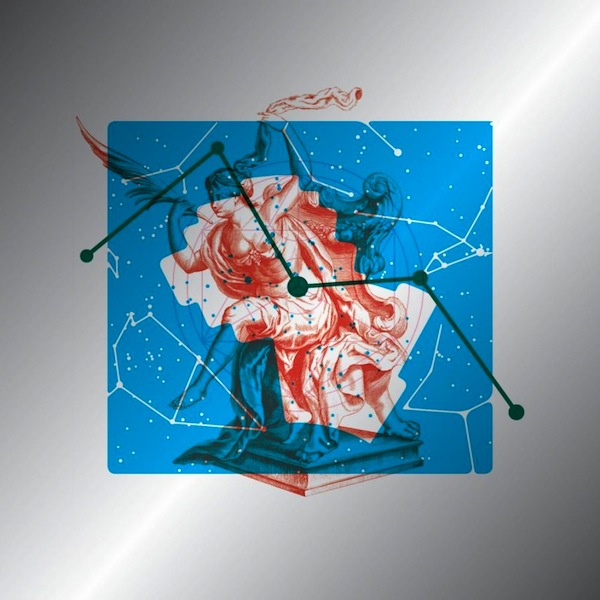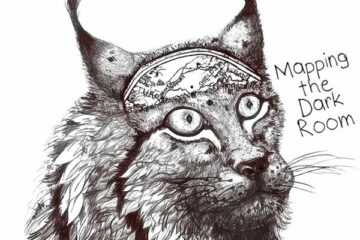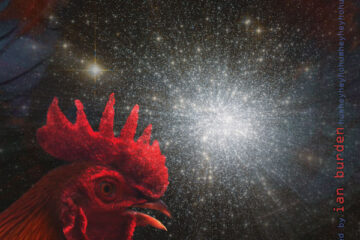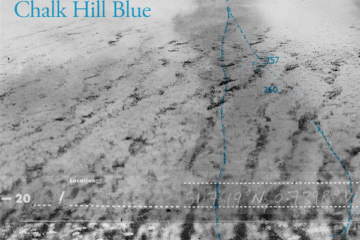A cosmic journey of aural delights…
Out of all the electronic music releases in 2017, Hannah Peel’s latest opus has to rank as one of the more intriguing albums to reach the ears of music enthusiasts. Mary Casio : Journey To Cassiopeia takes a sharp left from her previous album Awake But Always Dreaming (see TEC’s review here), an album that drew on her own family experiences with dementia, and presents a cosmic journey relayed in 7 movements that are composed from analogue synths and brass band arrangements.
The result is a concept album of sorts that revolves around Peel’s alter ego of ‘Mary Casio’. Drawing from her influences of electronic pioneers Daphne Oram and Delia Derbyshire, Peel’s back story for Mary Casio is as an elderly stargazing electronic musician. Her lifelong dream is to leave her mining town home of Barnsley in South Yorkshire and journey into space via home-constructed, hand-made machines that ‘buzz and whirr’ alongside her ever-growing collection of antiquated analogue synths, which she started collecting ever since her father gave her a Casio keyboard as a child.
Ironically, Journey To Cassiopeia is actually bereft of Casios, although there’s a choice number of classic synths in action on the album, including that sturdy workhorse the Juno-60 (favoured in times past by everyone from Howard Jones to Enya) and a Korg Mono/Poly. Meanwhile, the brass orchestra (conducted by Sandy Smith) offers a complimentary organic sound to the whole affair.
As a result, the album boasts a very warm feel overall and is perhaps a great argument against the idea that electronic music can be both cold and lacking in a human touch. Take the opening track ‘Goodbye Earth’, which begins with the electronics front and centre, before building up to the seamless inclusion of brass. It concludes with a composition that has a big, broad sound that touches on the cinematic.
Following on from this, the brass arrangements take a more central role on the engaging ‘Sunrise Through The Dusty Nebula’. There’s a quiet beauty in this composition with the chord changes and brass lending the track a certain romance. It’s a composition that fires the imagination to suggest the idea of drifting through space.
Peel has made no secret of her love for the German school of electronic music, particularly Cluster (their 1974 album Zuckerzeit apparently being a particular favourite), which has led to a homage of sorts on ‘Deep Space Cluster’. Here, a repeating tuba refrain drives the composition forward while a rumbling percussion picks up the pace as the track advances.
There’s an eerie quality to ‘Andromeda M31’ as fragments of radio transmissions appear to drift in and out. Meanwhile, brooding brass and synths give the whole thing a slightly unsettling quality to begin with. As the track swells however, a mesmerising airy synth sound begins to weave its way in (which suggests to these ears a nod to Brian Eno). The track closes out with some psychedelic percussive beats, which somehow when projected against the hypnotic synths paints a piece of music that covers a cosmic canvas.
BUY NOW
With Mary Casio now deep in space, the cosmic sounds of ‘Life Is On The Horizon’ appear. This offers up a more reflective moment with wistful synth notes slowly plucked in the ether. Meanwhile, a lone flugelhorn lends the piece a quiet melancholia, suggesting a sense of isolation and loneliness. Meanwhile, there’s a more driving refrain to ’Archid Orange Dwarf’, its repeating melodic synth gradually taken up by the brass players.
Mary Casio’s journey reaches an end of sorts on ‘Planet Of Passed Souls’, which kicks off with a hymnal quality in the organ sounds of its opening bars. Then the track opens out with big brass stabs peppering the composition, giving it a sense of space and grandeur. Later, Peel’s trademark music box comes into play for an charming moment of reflection as a simple melody plays.
The piece closes out with a recording of a choirboy singing. In fact this is actually Peel’s grandfather, recorded at age 13 in Manchester Cathedral in 1927. The use of this recording lends the whole thing an oddly haunting quality, but at the same time seems a fitting piece to close proceedings on.
Peel is apparently happy for Mary Casio’s journey to not reach a tidy conclusion. Thus, it’s left to the listener to wonder if she actually made it to Cassiopeia or if in fact the whole journey was simply in her head as she dreams at home in Barnsley.
Mary Casio : Journey To Cassiopeia is an album that serves as an aural journey of delights, its unusual approach to combining synths and brass managing to present something both accessible and unique. It’s also a testament to Hannah Peel’s seemingly endless abilities to craft new and intriguing ideas out of the ether. It’s a cosmic journey that delivers.
Mary Casio: Journey To Cassiopeia is out now on My Own Pleasure.
http://www.hannahpeel.com
https://www.facebook.com/HannahPeelMusic
https://twitter.com/Hanpeel










